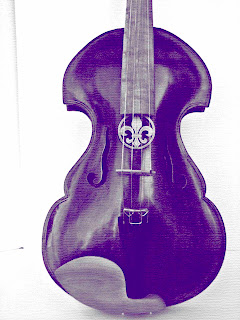Missing Stradivarius Violas?
Two violas were delivered by Antonio Stradivarius to Ferdinando di Medici (pictured below) in 1690. Only one survived! Where is this missing instrument? Provenance of historic instruments can be very important and interesting. And sometimes disappointing!
First, some viola background. Violas are older than violins and cellos! The first violas by Gaspar da Salo were of large size than the current instruments. Later, the Amati family and Antonio Stradivarius constructed instruments of approximately this design but smaller . "Design rules " were not as specific as those for violins and cellos so variations exist!
The next question is "how many" did he make. This question is not so easily answered. Although Antonio Stradivarius made as many as 1,000 stringed instruments possibly as few as 10 were violas. While 700 violins and cellos remain, violas did not fare as well. A short list can be made from historic documents.
For example:
1672 one instrument, wide with large head, back and sides poplar, sound holes higher on the front,
1685 two instruments for Bartolomeo Grandi for Duke of Savoy, part of set of six instruments
1690 two violas for the Duke of Tuscany of which one survives. These were "long Strad violas" with lower sound holes, high arching, broader edge, shorter corners (Stradivarius may have varnished finger board in place!) The surviving instrument may have been strung with more than 4 strings at one time! In 1803 sold to an Englishman, then into France, back to England (sold in 1913 by Hill brothers) to the Wurlitzer Company (New York), then in 1925 to Herbert Strauss of the Macy family retailers. Where is the other Stradivarius viols and what happened to it? Will it be discovered? Will any of the others appear?
 |
| Ferdinando di Medici, first 1690 viola owner |
1695 there exists a cryptic reference to a Stradivarius viola
1696 one, red-orange Stradivarius
1701 see Cozio.com
1707 two violas for Charles III of Spain, none survive
1734 viola with slab back, see Cozio.com
.jpg) |
| Cosmo di Medici, father of Ferdinando |
In conclusion, Stradivarius violas are quite rare and the historical provenance records are interrupted and incomplete. These undoubtedly were fine instruments and well worth building as accurate replicas! The reconstruction by Violins of Plymouth has now been completed and "acoustic testing" has begun to fine tune this historic platform. Testing software is, of course, J. S. Bach's Prelude for Solo Cello, arranged for viola. This instrument may have met the approval of Ferdinando di Medici and one hopes he would not have lost it!
























































